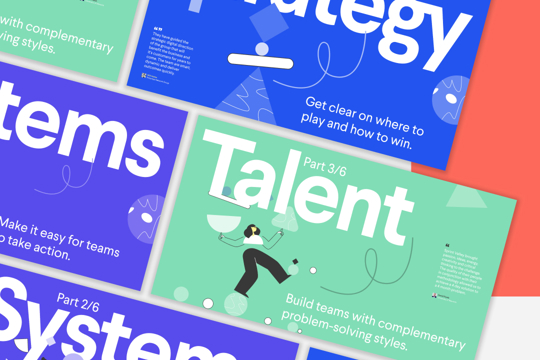The Change Reflex™
A 3-minute diagnostic for change leaders
Define your approach to change
Identify which Change Leadership levers hold the biggest opportunity for you.
Discover bullet-proof leadership tactics
Get 18 bullet-proof tactics you can use to shift your approach
Drive change inside your business
Build The Change Reflex across your team or organisation
Take the diagnostic.
Take the 3 minute diagnostic to explore different elements of how you lead change within your organisation.


Get your free report.
After taking the assessment you'll receive a free report packed with inspiration on how to lead change, using Behavioural Science.
Discover a new approach.
Uncover 18 new tactics to help your team lean into change with confidence.

There’s a simple formula for Behaviour Change.
For any behaviour to happen, there are 3 things that need to be in place.
- Motivation - “Why am I doing this and am I doing it right?”
- Opportunity - “Do I have what I need and do the people around me mind me doing it?”
- Capability - “Can I do it and do I have the people around me I need?”
Get those things in place and voila! You’ll get the behaviours you need.
It’s called COM-B–a model well-known in behavioural science and lesser-known (yet equally powerful!) in the world of organisational change.
Today we are making this model accessible to Change Leaders.
We have mapped 6 distinct levers you can use to drive change inside your organisation.
For each change lever, you’ll find 3 simple actions you can take to boost your own capabilities as a leader and positively influence the direction of your company.
Continue reading to find our favourite quick tips, or take our free 3-Minute Change Reflex Diagnostic to find out how you stack up.
Motivation
Motivation is made up of emotional and psychological factors that push someone to take action. The key to keeping motivation high is ensuring the team have a clear sense of purpose and desire to see the change through.
Align your business to innovation priorities
- Get your senior team aligned on the big challenges putting your business at risk so that teams are clear about where to focus.
- Remind your team about the real problems customers are paying you to solve so that everyone knows where the real value comes from. If it has been a while since you’ve talked to your customer, consider conducting customer research to bring the voice of the customer into the conversation.
- Invest in a spread of potential solutions, rather than putting all your eggs in one basket, so you have more opportunities to find new solutions that really deliver.
Help your teams progress and adapt
- Be explicit about the topics you want your team’s input on - without this, you’ll get irrelevant ideas and frustrated employees.
- Overcommunicate success and failure - let teams know how they’re doing, and when things don’t work, show people what happened so they know which potholes to avoid in the future.
- Reward outcomes but be careful about incentives. Empowering teams to create change is a huge motivator, use ‘now that’ rewards rather than ‘if > then” incentives which have been shown to decrease engagement for complex tasks.
Opportunity
Opportunity is made up of external factors that enable or hinder the team from succeeding. This could include time, money, or resources. Breaking down these opportunity barriers leads to more successful outcomes.
Make resources available
- Create pathways for distributed teams to discover challenges and submit their ideas wherever they are (this could be as simple as a form or as fancy as an open innovation platform).
- Be clear about the steps you want teams to move through to develop and test new ideas - make templates, resources and guidance easy to access. Our SpringBoard toolkit is a great place to start. It comes complete with Miro templates and step-by-step facilitation guides to help teams go from fuzzy challenge to proven strategy, in days rather than months.
- Help people make tiny bets on big ideas - think about how you could make it easy for teams to try new things at a small (and inexpensive scale) without needing arduous approvals. At Sprint Valley, we call this Employee-Led Change.
Nurturing a culture of action
- Ask for golden eggs (problems without solutions) so that your team are comfortable talking about the real barriers, even when they’re not sure what the solutions are.
- Go to the ‘Gemba’ (the scene of the crime) and ask people who touch the problem daily to share their perspectives - make it known you expect anyone with ideas to contribute.
- Get out of the team’s way! Expecting teams to accommodate new projects in their own time isn’t going to accelerate results. Be explicit about what they can stop doing to free up capacity. We share 4 ways to free up time for busy teams here.
Capability
Capability is an individual's ability and competence to perform a particular task. As leaders, we need to empower individuals with the necessary skills and confidence to see a change through.
Embed problem-solving skills in your team
- Pick a problem-solving method that suits the kind of challenges your team are tackling - then teach them how to use it (Design Thinking is a great start for people-centred challenges).
- Create opportunities for them to practice problem-solving skills and small but meaningful challenges that affect them at a team level - improving collaboration is a great start. See how Nike and Scottish Power improved collaboration in partnership with Sprint Valley.
- Make sharing feedback a habit by asking teams to share what’s working and what could change at the micro-scale (weekly) and macro (project milestones).
Intentionally assemble the right teams
- Get your team to take a cognitive diversity assessment so you can identify which problem-solving styles are in abundance, and which ones you’re missing. We love using the Basadur Profile.
- Get familiar with the 4 common symptoms of poor cognitive diversity so you can quickly identify what’s holding your team back:
- Customers not adopting solutions? Too few Generators.
- Low project success rate? Too few Conceptualisers.
- Projects stalling? Too few Optimisers.
- Not enough project launches? Too few Implementers.
- Outsource your weaknesses! You don’t need to be great at everything, but you do need a balance of problem finding, idea generation, evaluation and implementation. Pick a partner that can help your team be more rounded. Find out if Sprint Valley can help, schedule a briefing with one of our partners here.
CHANGE BY SPRINT VALLEY
Discover our award-winning Change methodology.
When leading Behaviour Change and innovation experts become your sidekicks, magic happens.
